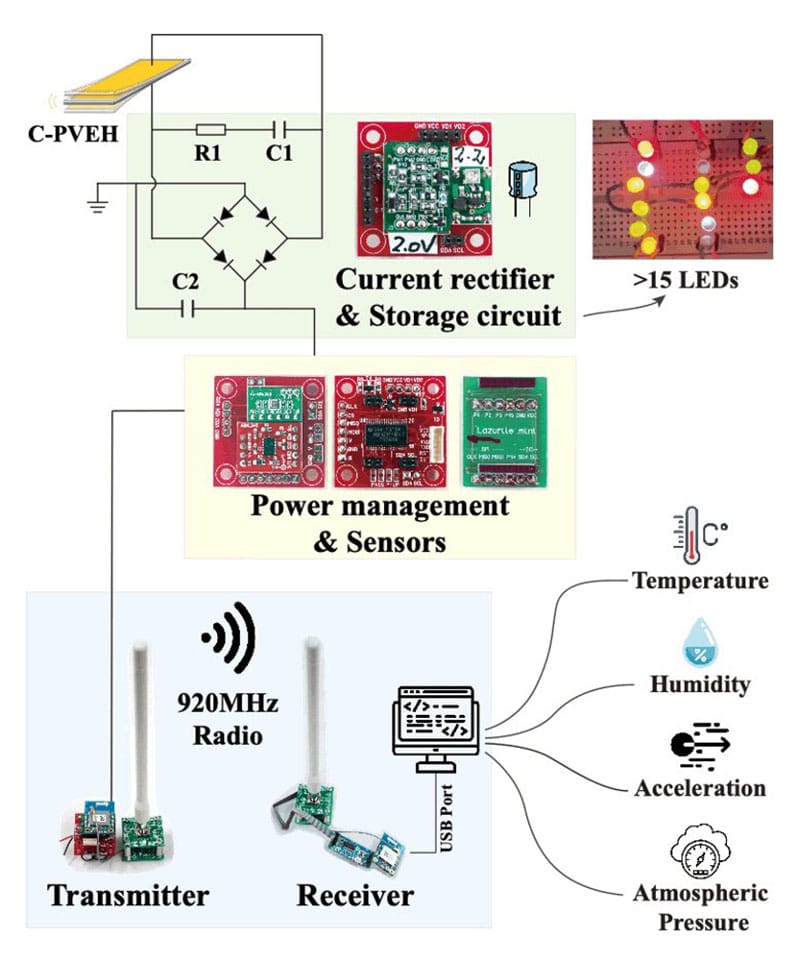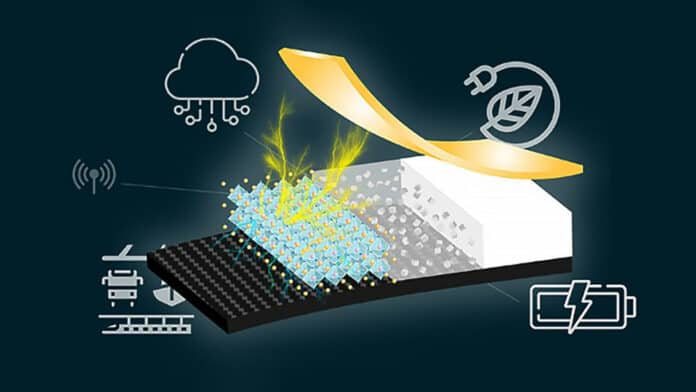Energy harvesting (EH) is a promising method for making self-powered IoT sensors. By using the energy from the surrounding environment, such as vibration generated by spacecraft and other moving objects, the sensors can generate electricity to power themselves, thereby eliminating the need for external power sources or battery replacements.
Now, an international team of researchers led by Tohoku University has engineered a new energy-generating device by combining piezoelectric composites with carbon fiber-reinforced polymer (CFRP), a commonly used material that is both light and strong. The new device transforms vibrations from the surrounding environment into electricity, providing an efficient and reliable means for self-powered sensors.
The novel energy harvester comprises a CFRP that serves as both an electrode and a reinforcement substrate. The CFRP electrode provides outstanding electrical conductivity and enhances the mechanical characteristics of the energy collector, thereby ensuring a steady electrical energy yield during resonance. The piezoelectric composite consists of potassium sodium niobate (KNN) nanoparticles mixed with epoxy resin.

Tests and simulations revealed that the CFRP-enhanced piezoelectric energy harvester (C-PVEH) could maintain high performance even after being bent more than 100,000 times. It proved capable of storing the generated electricity and powering LED lights. In addition, it outperformed other KNN-based polymer composites in terms of energy output density.
Notably, this technology shows great application potential for powering wireless communication systems, indicating a remarkable advancement in the field of self-powered IoT sensors.
“As well as the societal benefits of our C-PVEH device, we are thrilled with the contributions we have made to the field of energy harvesting and sensor technology. The blend of excellent energy output density and high resilience can guide future research into other composite materials for diverse applications,” says Fumio Narita, co-author of the study.
Journal reference:
- Yaonan Yu, Chao Luo, Hayato Chiba, Yu Shi, Fumio Narita. Energy Harvesting and Wireless Communication by Carbon Fiber-Reinforced Polymer-Enhanced Piezoelectric Nanocomposites. Nano Energy, 2023; DOI: 10.1016/j.nanoen.2023.108588
